NFT-funded pavilion by Iheartblob aims to promote decentralization
Architectural design studio Iheartblob has revealed the puzzle-like Fungible Non-Fungible Pavilion at the Tallinn Architecture Biennale in Estonia, which was partially designed by the public using NFTs.
The experimental structure, located outside Tallinn’s Museum of Estonian Architecture, was built from physical versions of NFT objects designed by the community.
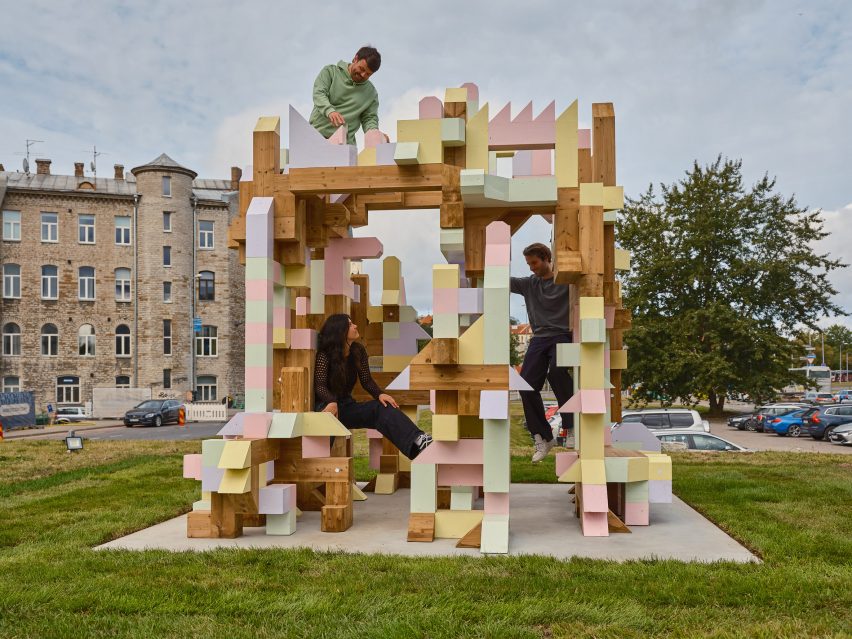
The Fungible Non-Fungible Pavilion was the winning entry in the Slowbuilding competition held for the main installation at the Tallinn Architecture Biennale (TAB) 2022.
According to UK studio Iheartblob, it is the first pavilion designed by the community using NFTs.
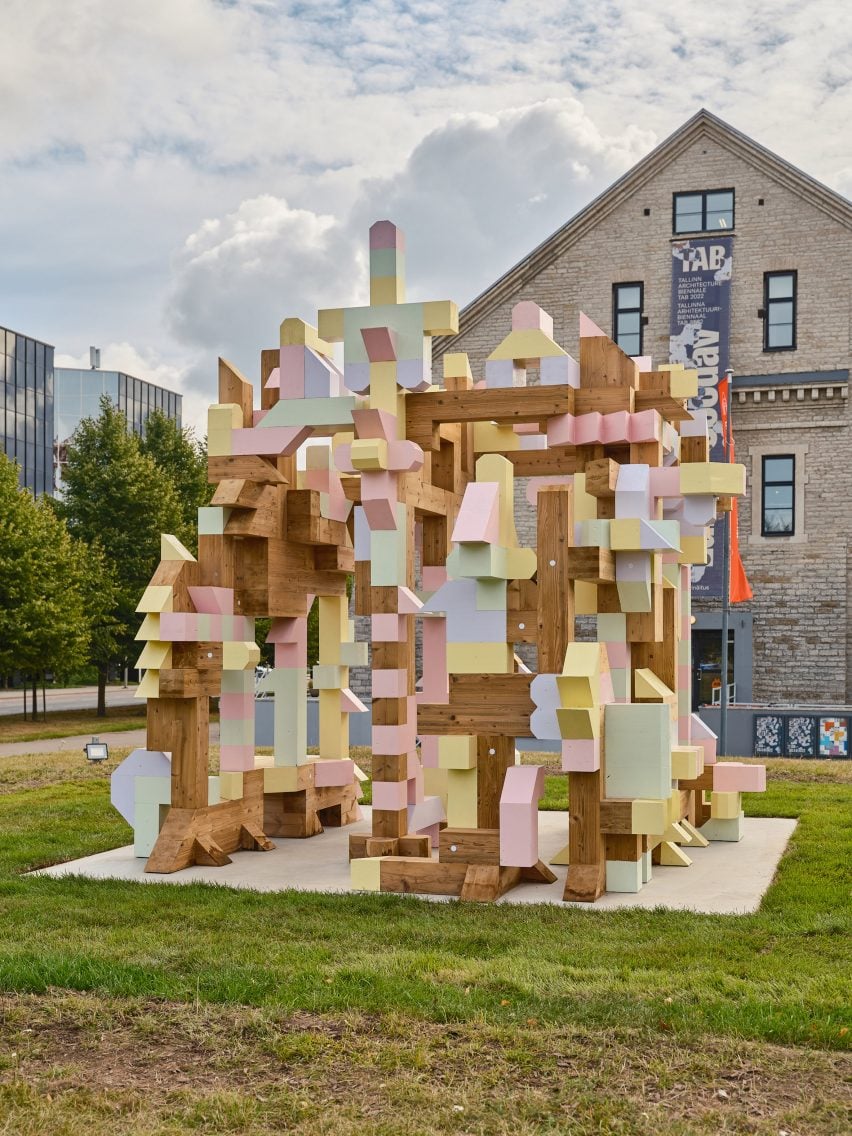
“This is the first NFT pavilion in the world designed by the community together, it is also co-owned by the community and co-financed by the community,” Iheartblob told Dezeen at the opening of the installation.
“The technology we use is very new and experimental, and we think it’s important to integrate it into architecture because architecture can benefit a lot from it.”
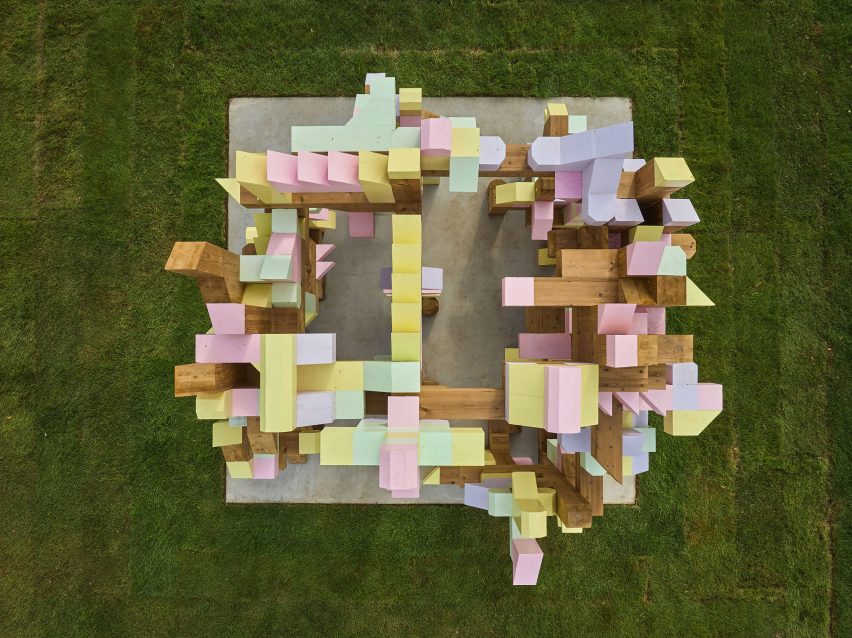
NFTs, or non-fungible tokens, are certificates of authenticity and ownership that exist digitally and can be assigned to both physical and digital assets. Each one is recorded, or “stamped”, on a blockchain in the same way as a cryptocurrency transaction, so it can be bought, sold and collected.
Iheartblob’s intention is for the pavilion to promote a slow and decentralized approach to architecture, where the community replaces the architect as “master builder”.
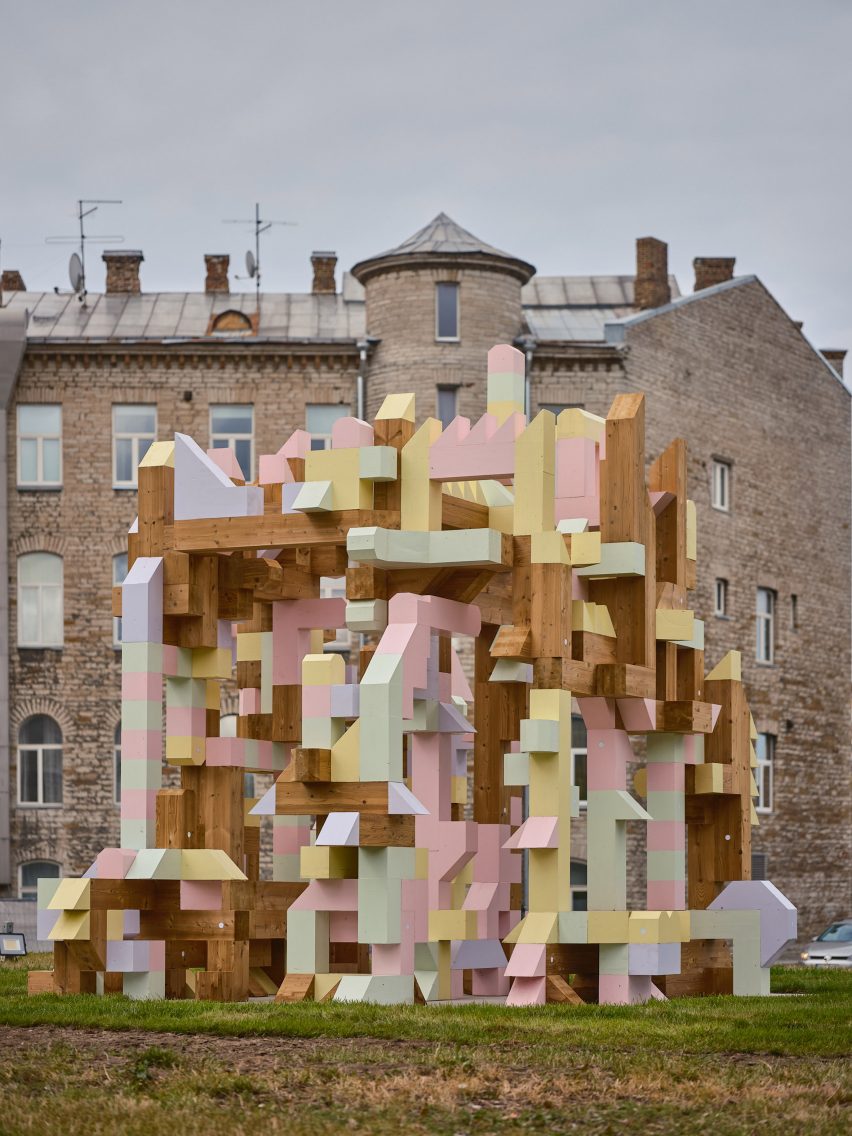
The design corresponds to the theme of the sixth edition of the biennial TAB festival, for which Dezeen is the media partner. Called “Edible; Or, the Architecture of Metabolism”, it was curated by architects Lydia Kallipoliti and Areti Markopoulou to explore food systems through the lens of architecture.
The pavilion is currently built from 78 unique puzzle-like pieces, although it is expected to expand.
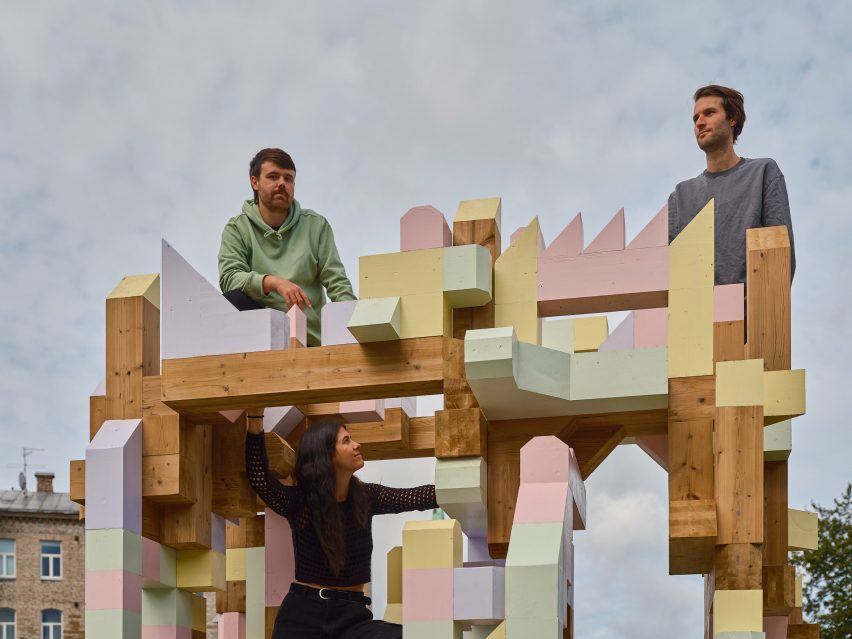
To facilitate this, Iheartblob built an NFT generative tool that anyone can use to design and emboss objects. Each NFT marked by this tool funded a unique physical twin that is now used in the pavilion.
The end result is a fragmented structure that has a presence in both the metaverse and real space and is co-owned by and reflective of the society that designed it.
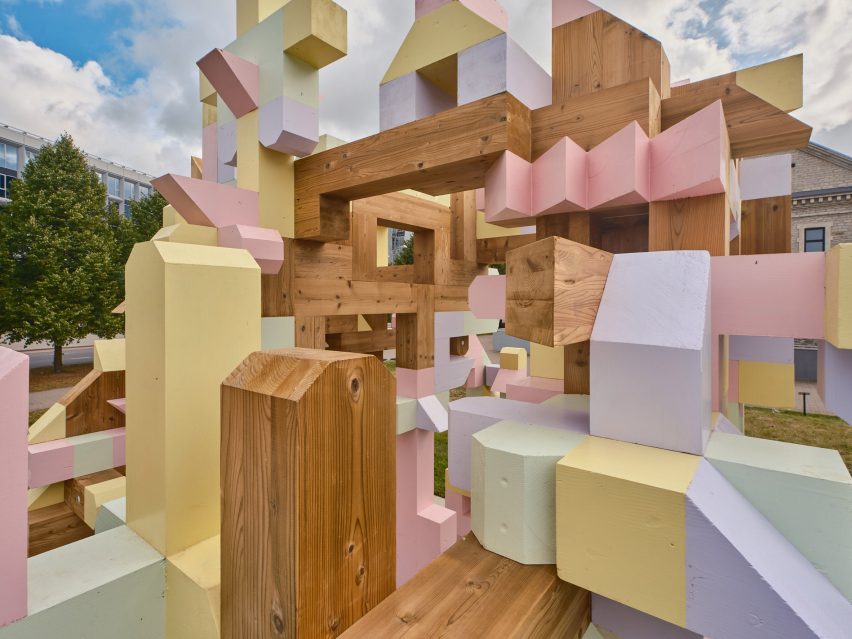
The tool is still open for use, meaning the pavilion will evolve and grow in size during its installation until the opening of the next TAB in 2023.
“The idea here is that since we have decentralized the process of architecture, since anyone can design a block that becomes part of this piece, since anyone can add to the pavilion, this will change during the Biennale,” explained the studio .
“To date I think we’ve had designers as young as five years old, create a piece we’ve had people here locally in Tallinn create many of these pieces. We’ve also had people from all over the world from Asia from America, design different pieces that have come together.”
While Iheartblob left the reins to the public when it came to the pavilion’s design, it provided a number of constraints to ensure the structure could be physically realized.
This included pre-defined shapes for the interlocking components and pre-determined timber materiality. There are also a maximum of 165 pieces, which will create a width, depth and height of approximately five meters.
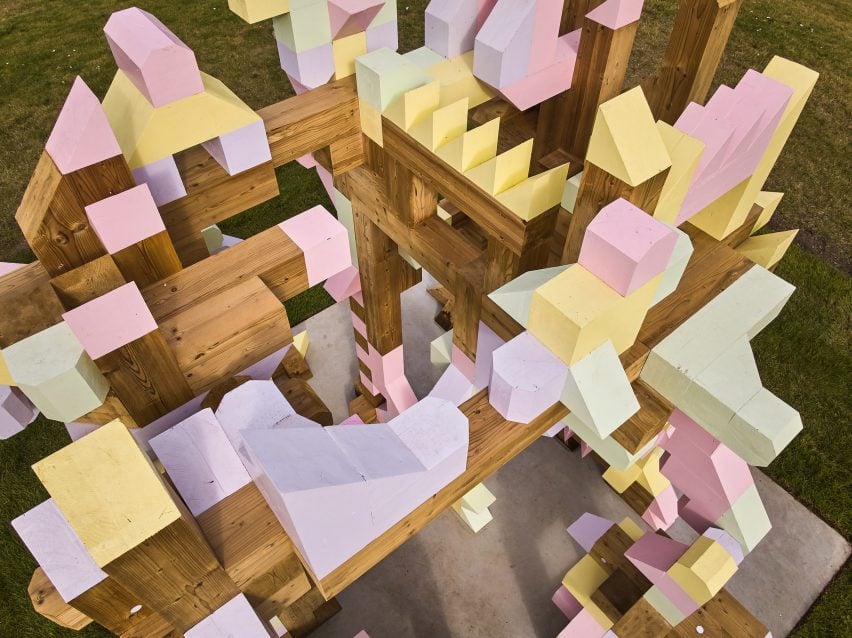
While promoting the idea of decentralization in architecture, the studio hopes that the Fungible Non-Fungible Pavilion will demonstrate the value of NFTs in the sector.
“We believe blockchain and NFTs can enter many aspects of the profession from allowing NFTs to determine the authenticity of architectural drawings to more experimental approaches that determine ownership and authorship, with royalties, of shared housing or even entire cities,” explained the studio.
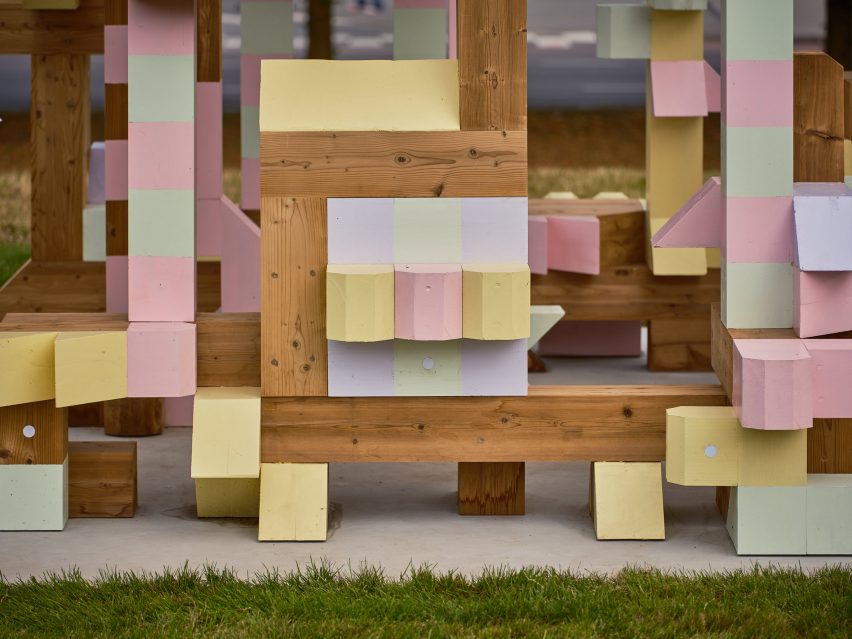
The Fungible Non-Fungible Pavilion was chosen to create the pavilion shortly after the original competition winners, the Australian duo Simulaa and Natalie Alima, withdrew their proposal for an installation made of fungi.
Alongside the pavilion, this year’s TAB includes a curated exhibition at the Museum of Estonian Architecture and other fringe events. The event was previously expected to take place in 2021, but it was pushed back to 2022 due to the coronavirus pandemic. The seventh edition is still planned for 2023.
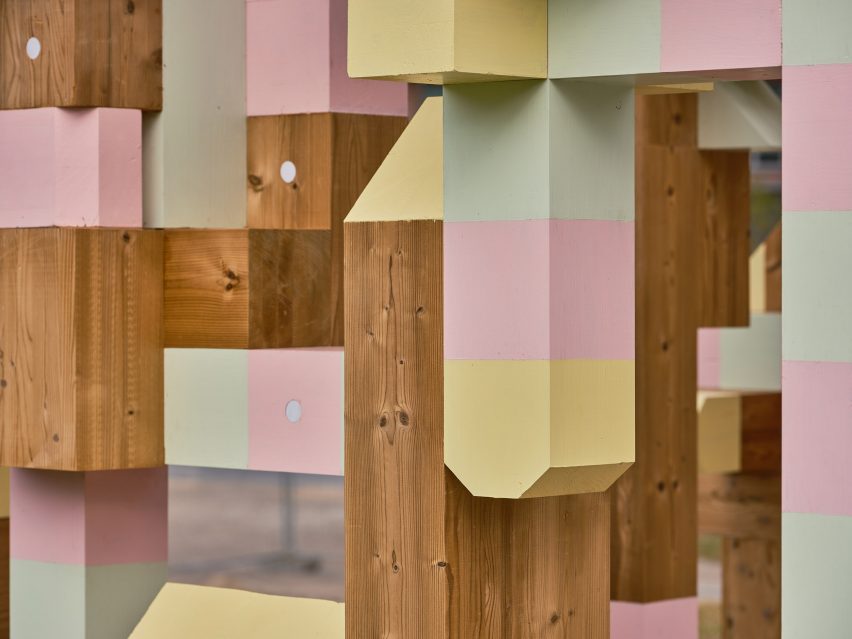
At the previous TAB in 2019, the central installation took the form of a twisted pavilion designed by SoomeenHahm Design, Igor Pantic and Fologram. The structure explored augmented reality and old-fashioned woodworking such as steam-bent hardwood.
Tallinn Architecture Biennale will take place from 7 September to 20 November 2022 at various locations in Tallinn, Estonia. See the Dezeen Events Guide for an up-to-date list of architecture and design events taking place around the world.
The photograph is of Tõnu Tunnel.


